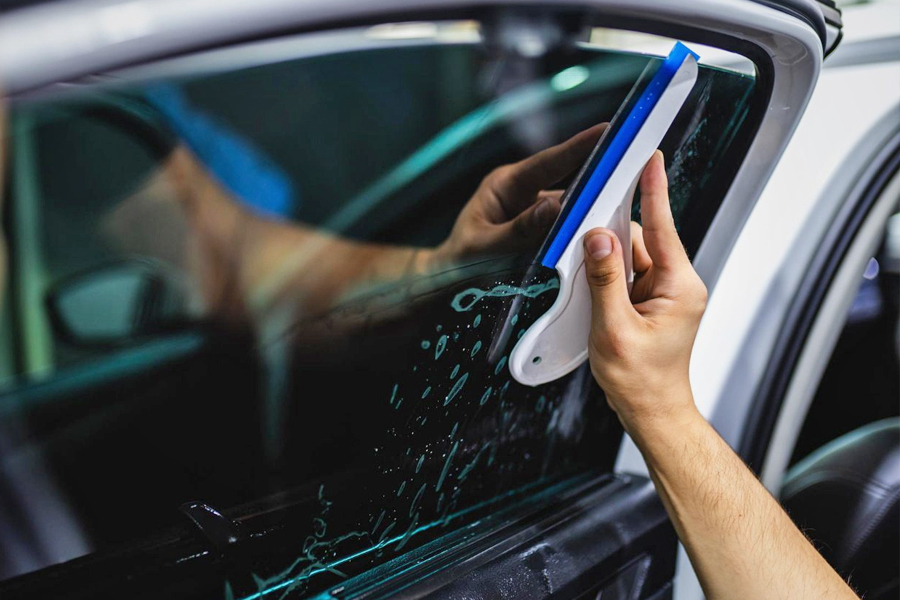Home Window Tinting Laws and Standards: What You Need to Know Before Tinting Your Auto
Prior to waging home window tinting for your automobile, it is vital to acquaint yourself with the varied laws and standards that control this technique across various states. These guidelines dictate the allowable levels of color darkness, usually determined by noticeable light transmission (VLT) portions, and consist of particular stipulations for front windscreens focused on making sure road security. In addition, particular territories may provide medical exemptions for individuals with certifying problems. Understanding these intricacies can conserve you from potential legal implications, however what are the specific rules in your state?
Review of Window Tinting Regulations
Home window tinting laws are regularly based on variation across various territories, mirroring regional policies and safety considerations. These laws dictate the allowable degrees of color darkness and reflectiveness on vehicle home windows, making sure that chauffeurs preserve adequate visibility while also protecting against damaging UV rays and warmth.
The majority of policies classify window tinting based upon the Visible Light Transmission (VLT) percentage, which shows the amount of light that can pass via the window. Generally, lower VLT percents represent darker tints. Laws often set apart in between the front, side, and rear windows, with more stringent restrictions applied to the front windshield to enhance safety for both the chauffeur and various other roadway users.
Compliance with home window tinting regulations is important, as offenses can result in penalties, obligatory removal of the tint, and potential rises in insurance costs. It is vital for car proprietors to familiarize themselves with regional legislations before proceeding with window tinting setups.
State-by-State Tint Laws
Comprehending the certain home window tinting laws in each state is vital for car owners seeking to abide with the law. Each state in the U.S. has developed its very own set of rules controling home window tinting, which can vary substantially. These guidelines often determine the allowed degrees of color darkness, the kinds of home windows that can be tinted, and any type of clinical exemptions that may use.
For circumstances, states like The golden state have strict restrictions on color darkness for front windows, while others, such as New Mexico, may allow darker tints. Furthermore, certain states mandate details exposure percentages for various home windows, including the windshield, front side home windows, and rear home windows. It is crucial for vehicle proprietors to familiarize themselves with their state's legislations to stay clear of possible penalties or penalties.
Furthermore, some states may require a certification sticker label to be positioned on tinted home windows, suggesting compliance with state laws. Failing to abide by these regulations not only risks lawful consequences however can also influence security and visibility while driving. For that reason, vehicle proprietors must carry out comprehensive study or seek advice from neighborhood authorities to make sure full understanding and conformity with state-by-state tint guidelines.
Allowed Color Degrees and Kinds
Many automobile owners may be amazed to find out that permitted tint levels and types differ commonly throughout various states. Each state has actually established its very own policies concerning the permitted darkness and reflectivity of window color, commonly determined by Visible Light Transmission (VLT) percents. VLT refers to the quantity of light that can pass with the colored windows; therefore, a lower percent shows a darker tint.

Moreover, the sorts of color products permitted can differ, with some states banning mirror-like or metal surfaces. It is crucial for lorry owners to acquaint themselves with their state's specific legislations to make sure compliance. Non-compliance can result in penalties, obligatory elimination of the color, or other legal repercussions, making it essential to understand these regulations prior to continuing with installation.
Medical Exemptions for Tinting
While not all states give allowances for medical exceptions regarding window tinting, those that do recognize the requirement for details individuals to enhance exposure and convenience as a result of clinical problems. Different medical conditions, such as lupus, skin cancer, and particular eye problems, can make individuals particularly sensitive to sunshine. Consequently, these individuals might need darker tints to safeguard themselves from dangerous UV rays and glare.

It is crucial to keep in mind that despite having a medical exception, there might still be limitations on the level of color enabled. Compliance with state laws makes certain that individuals are both secured and he has a good point within lawful limits. Those thinking about medical exceptions should contact their neighborhood Department of Electric motor Cars or equal authority to recognize the treatments and needs required to get an exemption properly.
Penalties for Non-Compliance
Stopping working to abide by window tinting regulations can bring about significant charges, which differ by state. Legislation enforcement companies are equipped to provide citations for cars that do not stick to the defined tinting guidelines. These penalties typically consist of penalties, which can range from small quantities to a number of hundred bucks, depending on the seriousness of the infraction and the state concerned.
In some territories, duplicated offenses might lead to escalating penalties or additional charges, such as mandatory court appearances. Non-compliance might require the elimination of unlawful tinting, commonly at the owner's cost. In extreme situations, regular offenders may face suspension of their vehicle registration until conformity is achieved.
Additionally, insurance implications might occur from obtaining several citations for home window tint infractions. Insurers might see such offenses as an indication of riskier habits, potentially resulting in enhanced premiums or trouble in protection.
To prevent these penalties, it is important for automobile owners to familiarize themselves with their neighborhood home window tinting legislations and make certain that their automobile complies (Window Tinting). This positive method not only stays clear of lawful implications but additionally promotes road safety and security
Verdict

Most regulations identify home window tinting based on the Visible Light Transmission (VLT) percent, which indicates the amount of light that can pass through the window. Compliance with window tinting regulations is critical, as violations can result in fines, obligatory elimination of the color, and possible rises in insurance premiums.Understanding the specific window tinting laws in each state is vital for lorry proprietors seeking to comply with the regulation. These laws typically dictate the allowable levels of tint darkness, the types of home windows that can be tinted, and any kind of medical exemptions that might use.
For instance, states like California have strict restrictions on tint darkness for front his explanation home windows, while others, such as New Mexico, may enable darker colors.
 Andrea Barber Then & Now!
Andrea Barber Then & Now! Michelle Trachtenberg Then & Now!
Michelle Trachtenberg Then & Now! Monica Lewinsky Then & Now!
Monica Lewinsky Then & Now! Bernadette Peters Then & Now!
Bernadette Peters Then & Now! McKayla Maroney Then & Now!
McKayla Maroney Then & Now!